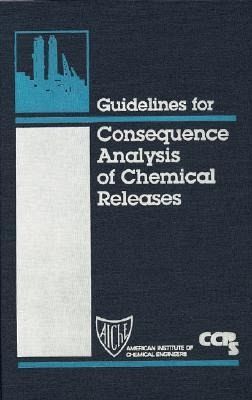
Guidelines for Consequence Analysis of Chemical Releases

PAYBACK Punkte
112 °P sammeln!
This Guidelines book provides technical information on how to conduct a consequence analysis to satisfy your company's needs and the EPA rules. It covers quantifying the size of a release, dispersion of vapor clouds to an endpoint concentration, outcomes for various types of explosions and fires, and the effect of the release on people and structures. Special Details: Includes CD-ROM with example problems worked using Excel and Quattro Pro. For use with Windows 95, 98, and NT.


